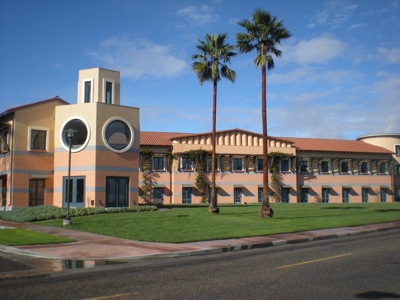 The KITP is the first and foremost scientific research facility where theorists in physics and allied fields congregate, for sustained periods of time, to work together intensely on a broad range of questions arising from investigations at the leading edges of science.
The KITP is the first and foremost scientific research facility where theorists in physics and allied fields congregate, for sustained periods of time, to work together intensely on a broad range of questions arising from investigations at the leading edges of science.
Those questions are addressed in an array of concurrently running programs, ranging in length from a few weeks to several months. The programs, which attract select groups of participants from institutions worldwide, are designed to enhance interaction and collaboration among participants in order to stimulate the vibrant, creative thinking that leads to insight and significant scientific progress.
Most programs include one-week conferences particularly attractive to experimentalists preferring short trips away from their laboratories.
The number of participants in KITP programs and conferences averages 1,000 a year. That simple body count does not convey how well the KITP does in attracting scientists to engage in the sustained interactions that foster productive collaborations. A better metric for that assessment is the total number of days invested by visiting scientists, which currently averages 23,500 visitor days per year. (That number is equivalent to 230 visits of 100 days each or 2,300 visits of 10 days each.) The average length of visit to a KITP program is 36 days.
A study published in Proceedings of the National Academy of Sciences ranked KITP number one in its assessment of the impact of research conducted at a wide variety of different facilities, including national laboratories, research institutes, and major universities considered both as a whole, but also in terms of their individual best departments. In other words, research conducted in conjunction with KITP programming has had a greater effect on other researchers than research conducted anywhere else. (The study focused on science research facilities, including mathematics and the engineering fields, but excluding biomedical science.)
When and Where
Launched in 1979 under the auspices of the National Science Foundation (NSF) and located on the campus of the University of California at Santa Barbara, the KITP has emerged in the last 30 years as a model for facilitating productive and sustained scientific collaboration. Initially conceived principally as a national center for theoretical physics, the KITP has evolved a model for collaboration that has been widely imitated both by other disciplines (mathematics, for example) and by other countries (most recently, China and India).
Successful imitation entails first-hand experience of the original. And the KITP has routinely attracted the best scientists not only from the U.S., but also from around the world to formulate and to participate in programming. It has, consequently, become the preeminent international center for advancing theory in science.
More Information:
What is the role of theory in science?
The KITP is not a physics institute per se, but an institute for theoretical physics. The relevance of advanced mathematics to theoretical inquiries has contributed to the emergence of theoretical physics as a specialty.
What is the KITP model for enhancing collaborative research through quality program design?
The process for devising KITP programming is designed to maximize the probability of quality research outcomes through stimulation of interaction and collaboration among participants.
What criteria affect program selection?
Selection of programming proposals depends on whether the science they entail is not only timely, but also exciting.
In addition to its distinctive approach to programming, what else is special about the KITP?
Remarkable is the breadth of science done at the KITP. It ranges from cosmology to biology, from string theory to climate science and geophysics, in addition to the more traditional physics fields such as condensed matter, particle physics, atomic physics, optics, turbulence, and complexity.
How does the KITP programming model differ from the traditional academic conference?
The KITP model aims to induce speakers and audience members to interact more and more authentically in contrast to the set-talk mode of the standard scientific conference.
Why does the KITP host short conferences in conjunction with long programs?
The key purpose of KITP conferences is to bring theory face to face (so to speak) with experiments or observations.
What has the KITP done for science; what are its accomplishments?
Research in conjunction with KITP programming has a greater impact on researchers than research conducted in conjunction with any other facility. KITP has helped create new fields.
Why is the KITP approach an efficient, innovative way of doing science?
KITP provides a highly flexible, cost-effective and adaptive platform for doing science. That platform is designed to run the best programs, geared to ongoing basic science research that is very wide-ranging. Decision-making about funding allocation is kept close to science.
How does KITP serve as a resource for both professional scientists and also the interested public worldwide?
The KITP infrastructure, used to run scientific programs, easily adapts to support other notable efforts at science communication and education.
